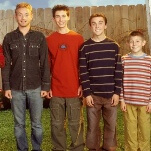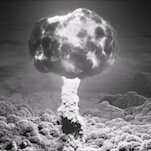Stewart O'Nan: Everyday People

At first there seems to be no connection between Stewart O'Nan's previous book The Circus Fire—a nonfiction account of a 1944 big-top tent blaze that killed 167 people—and his new Everyday People, a fictional survey of a poor urban neighborhood in contemporary Pittsburgh. The former assumes a detached tone of reportage and concerns Hartford, Connecticut's mostly white residents, while the latter is populated entirely by black characters, often adopting the hip-hop-inflected slang of the streets. But beyond their superficial differences, both are evocative and compassionate studies of how a single event can radically alter the shape and identity of a community. Although the construction of the Martin Robinson Express Busway in Everyday People doesn't rise to the level of human tragedy, its impact, symbolic and literal, is devastating in its own right. Built to accommodate the throngs of suburbanites that commute downtown every morning, the expressway effectively separates East Liberty from the rest of the city, acting like a tourniquet that cuts off the flow of money and prosperity to its residents. In weaving together about a dozen interconnected characters, O'Nan centers on the Tolbert family, whose youngest son Chris has just returned from the hospital, paralyzed after he and a friend fell from an overpass they were painting with graffiti. Bereft of his friend and confined to a wheelchair, Chris spends his days at home smoking pot and watching science-fiction shows on television. His infant son is in the custody of estranged girlfriend Vanessa, who works days as a waitress at the Pancake House while taking a night course on African-American studies, which she attends at first out of obligation but ultimately finds unexpectedly moving. Chris' older brother, an ex-convict who became a born-again Christian in jail, tries to lead a straight life but is torn by old gang loyalties. Meanwhile, their neglectful father steals away from home to pursue a homosexual relationship with a much younger man. Everyday People volleys among several other major characters, each fully realized and rife with internal conflict, but at a mere 300 pages, O'Nan hasn't allowed himself the scope he needs to give their stories any cumulative force. Chapter by chapter, their personal histories could form the basis of a concise short-story cycle, sketching a portrait of inner-city life marked by common struggles with alienation and identity. But despite O'Nan's considerable storytelling gifts, Everyday People seems thin and undernourished on the whole, failing to harness a group of fascinating individuals into a fully peopled neighborhood.







































